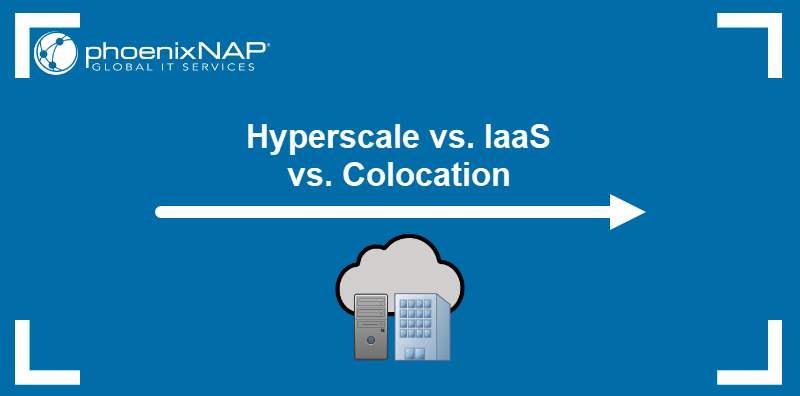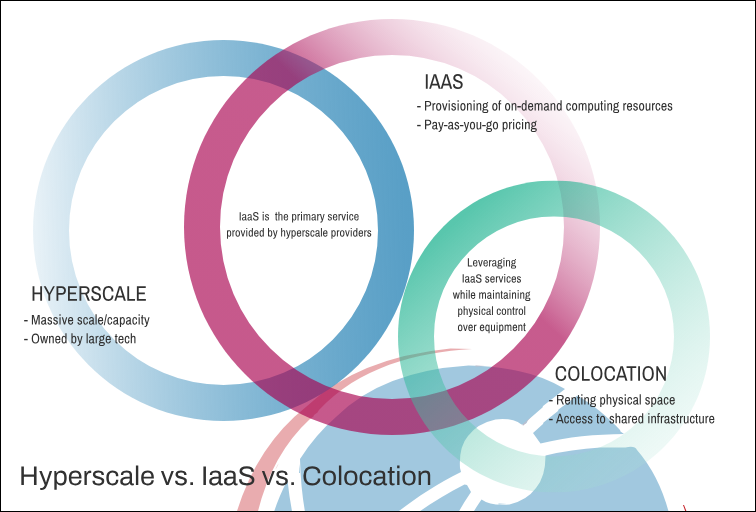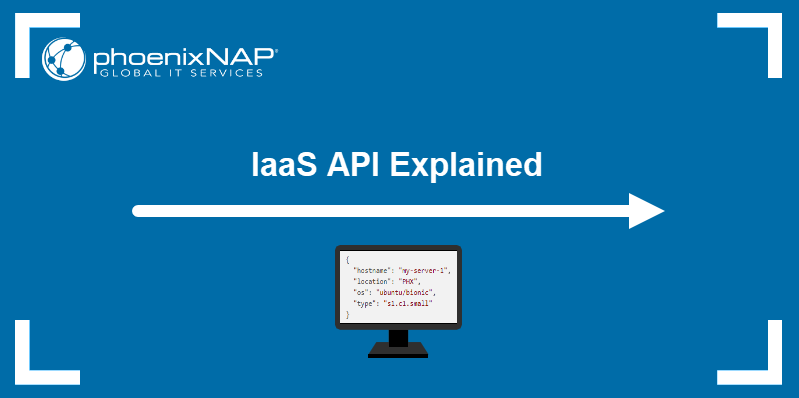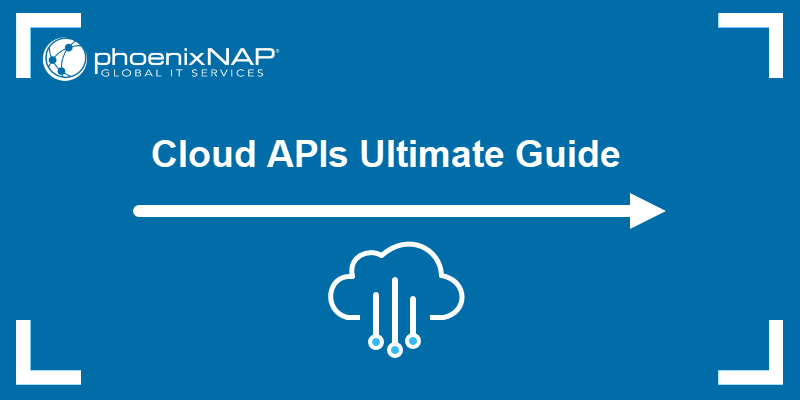Modern business requires scalable and cost-effective digital infrastructure. A company's size, industry, and budget determine the optimal solution for its IT infrastructure needs.
This article explores the differences between three popular infrastructure solutions: hyperscale, Infrastructure as a Service (IaaS), and colocation.

Hyperscale vs. IaaS vs. Colocation: In-Depth Comparison
Hyperscale, IaaS, and colocation are concepts that, while not directly comparable, offer businesses options to scale and optimize IT infrastructure. The following table provides a quick overview of the terms and the main comparison points:
| Hyperscale | IaaS | Colocation | |
|---|---|---|---|
| Definition | Infrastructure tech capable of meeting the highest resource demands. | A cloud computing offering that provides virtualized computing resources on a pay-as-you-go basis. | A service that enables customers to rent physical space in a data center and use it to host their hardware. |
| Scale | Largest scaling capabilities. | Moderate to large scaling. | Limited scaling. |
| Design | Automation and AI-optimized processes that improve deployment speed and emphasize reliability. | Focus on customization features and flexibility. | Focus on the ability to control hardware physically. |
| Security & Compliance | Highly secure and compliant, offering advanced threat detection capabilities and dedicated security teams. | Provides security features such as encryption and access control, leaves the rest to the customer. | Offers physical security features such as surveillance and on-site access control. The software security is entirely the responsibility of the customer. |
| Cost | Smallest price per unit, but the expenses quickly accumulate for large-scale deployments if overscaling occurs. | Flexible pricing models. | Fixed monthly fees. |
Read the sections below for more detailed explanations of each concept.
Definitions
Definitions for hyperscale, IaaS, and colocation all revolve around the scale and efficiency of the offerings.
Hyperscale
Hyperscale is an infrastructure provisioning technology used by the largest cloud providers that can support quick, massive growth and always meet resource demand. This infrastructure type requires thousands of servers that activate and deactivate automatically and adapt to the current scenario.
Services that use hyperscale infrastructure include social media platforms, online multiplayer games, video streaming apps, and large-scale artificial intelligence and machine learning projects.
IaaS
Infrastructure as a Service (IaaS) is a type of cloud computing that offers virtualized computing resources. Iaas provides businesses of all sizes with an opportunity to rent servers, storage, and networking without investing in physical hardware. It is used in many scenarios, including cloud-based and mobile app development, web hosting services, data storage and processing for IoT, and DevOps practices.
IaaS is the primary service offered by hyperscalers since they specialize in offering the pay-as-you-go model for renting scalable computing resources like servers, storage, databases, and networking.
Colocation
Colocation is a service that enables companies to rent physical space within a data center and use it to house their servers and related equipment. Aside from providing space, colocation providers offer essential services like power, connectivity, cooling, and security. Colocation is often used by:
- Small and medium-sized businesses (SMBs) that need a cost-effective alternative to maintaining their own data center.
- Content delivery networks (CDNs), which improve performance and reduce latency by distributing their content across multiple locations.
- Startups that require an affordable and flexible option to store servers very early in the company's life.
Colocation lets users control their hardware on-site, while optionally integrating IaaS for added scalability.
Scale
The ability to scale resources in response to growing or declining demand is one of the essential aspects of every IT infrastructure offering. In this respect:
- Hyperscale provides the most significant scaling capabilities. Massive data centers owned by hyperscalers can accommodate the largest workloads and support rapid growth.
- IaaS services, unless provided by hyperscalers, offer more limited scaling. The scale an IaaS provider can offer depends on provider-specific resource constraints.
- Colocation provides the weakest scaling capabilities of the three, limited by the amount of physical space available for expansion in a colocation data center.
Note: phoenixNAP's global IaaS solution offers instant access to enterprise-grade tech on scale. Read why phoenixNAP is the best alternative cloud provider.
Design
The design of an infrastructure solution differs from provider to provider. However, the concepts of hyperscale, IaaS, and colocation have the following identifying features:
- Hyperscale services emphasize efficiency by optimizing performance and focusing on reliability. These goals are achieved with cutting-edge technologies like automation and artificial intelligence.
- IaaS offerings focus on customization and the ability to adjust to a customer's specific needs. While customization options often mean more management effort, the achieved flexibility makes IaaS a popular solution.
- Colocation provides less flexibility and optimization than the other two solutions. Still, the ability to physically control the hardware and configure networking is indispensable in some use cases.
Security & Compliance
Data protection and compliance with regulatory requirements are critical for infrastructure solutions. Hyperscale, IaaS, and colocation differ in how they deal with security:
- Hyperscale providers put a lot of emphasis on secure and compliant services. Dedicated security teams and robust threat detection capabilities protect customers from threats and regulatory challenges.
- IaaS providers frequently offer security features such as access control and encryption, but the customers are usually expected to implement additional security measures required for their use case.
- Colocation facilities focus on physical security, i.e., on-site surveillance and access control, but the standard software-oriented measures are the customer's responsibility.
Cost
Infrastructure service cost varies depending on the provider and usage patterns. However, each infrastructure model has specific rules:
- While hyperscale providers may offer low cost per unit, large deployments may still incur high overall costs.
- General IaaS providers tend to offer flexible pricing models, allowing greater expenditure control.
- Colocation usually comes with a fixed monthly cost, making it the most predictable but least flexible concept.
Hyperscale vs. IaaS vs. Colocation: How to Choose
As mentioned, hyperscale, IaaS, and colocation are not entirely different concepts. The diagram below sums up their identifying traits and illustrates how they overlap:

Choosing the suitable model for a use case depends on an organization's specific needs:
- Hyperscale is the best choice for large tech companies and startups that can predict rapid growth, especially in machine learning and big data analytics.
- The flexibility of IaaS makes it suitable for smaller and medium businesses that expect both traffic surges and slower periods. The most common use cases include web hosting, development/testing environments, and disaster recovery.
- Colocation is the optimal solution for companies that want to retain control over hardware resource management, such as those that use legacy systems.
Conclusion
This article compared three IT infrastructure models - hyperscale, IaaS, and colocation - according to scale, design, security, and usage cost. In the end, the article provided the most common use cases for each model, helping you choose the right one for your organization.
For more insights related to enterprise-level infrastructure solutions, read Hyperscale vs. Enterprise Data Center.

